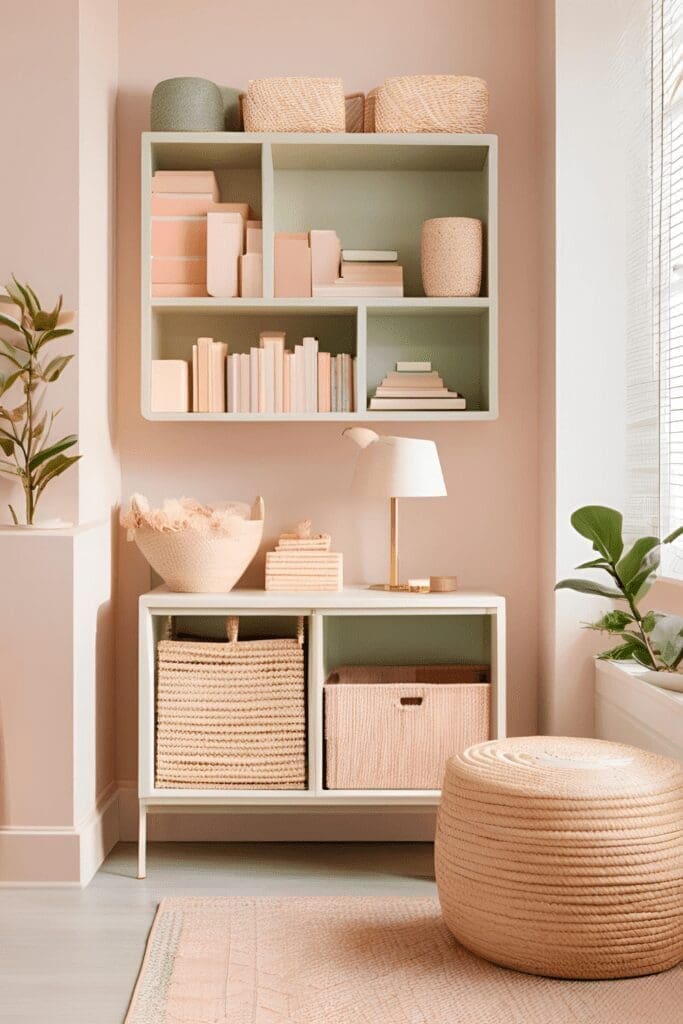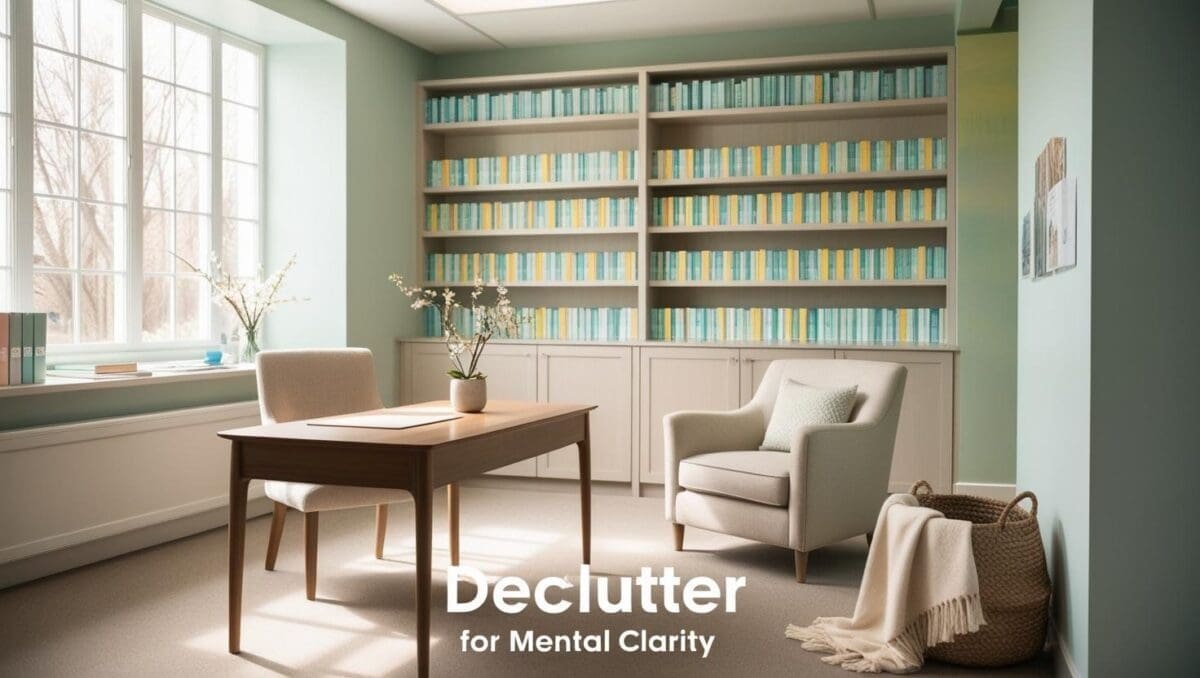The Connection Between Clutter and Mental Clarity
Picture this: You walk into a therapy office with piles of paperwork stacked on the desk, bookshelves overflowing with unread materials, and random knick-knacks filling every corner. Instead of feeling calm and grounded, the space feels chaotic—like there’s too much to process at once. Now, imagine stepping into a minimalist therapy office: clean surfaces, intentional decor, and a clutter-free environment designed to support emotional clarity.
A therapy office should be a sanctuary, a place where both the therapist and client feel present, focused, and at ease. Clutter, however, can create mental noise, making it harder for clients to open up and for therapists to stay fully engaged in their work.
In this article, we’ll explore practical ways to declutter and organize your therapy office while maintaining a minimalist aesthetic. Whether you’re dealing with excess paperwork, an overstuffed bookshelf, or simply too many decor items, these minimalist organization strategies will help you create a space that fosters calm, clarity, and productivity.

1. The Psychology of Clutter in a Therapy Office
Clutter isn’t just a visual nuisance—it can have a profound impact on how we think, feel, and behave.
How Clutter Affects Therapy Sessions:
- Increases mental overwhelm: A disorganized space can mirror emotional chaos, making it harder for clients to process their thoughts.
- Reduces focus and attentiveness: Both therapists and clients may struggle to stay present when surrounded by excessive visual stimuli.
- Creates an unintentional emotional response: Certain objects, books, or paperwork left out in the open might unconsciously influence a client’s mood.
Minimalist office design eliminates distractions and helps create a neutral, calming atmosphere where clients can feel safe and supported.

2. The Minimalist Decluttering Process: Where to Start
Decluttering a therapy office isn’t about getting rid of everything—it’s about being intentional with what you keep.
Step-by-Step Decluttering Guide:
✔ Start with Surfaces – Clear off desks, tables, and shelves. Only keep one or two functional or decorative items in each area.
✔ Remove Duplicates – Do you have multiple notebooks, extra pens, or unnecessary decor? Keep only the best and store or donate the rest.
✔ Digitize Paperwork – Use cloud storage or a secure digital note-taking system to reduce paper clutter.
✔ Evaluate Books & Decor – Keep only meaningful books and aesthetically pleasing decor that aligns with your office’s calming atmosphere.

3. Smart Storage Solutions for a Minimalist Therapy Office
Minimalism doesn’t mean you have to sacrifice storage—you just need to choose intentional and hidden storage solutions that maintain a clean aesthetic.
Minimalist Storage Ideas:
- Floating Cabinets & Wall-Mounted Shelves – Keep storage off the floor for an open, airy look.
- Neutral-Toned Storage Baskets – Stylish yet functional, they hide office supplies while keeping the space warm and cozy.
- Desk Organizers with Concealed Compartments – Keeps essentials close but out of sight.

4. Creating an Intentional Decor Strategy
Decor plays a crucial role in setting the mood of your therapy office, but too much decor can feel overwhelming. Minimalist decor is about choosing quality over quantity and ensuring that every piece serves a purpose.
Minimalist Decor Essentials:
- A Single Statement Artwork – Choose a neutral, abstract, or nature-inspired piece for a soothing effect.
- Soft, Feminine Textures – Incorporate linen curtains, velvet pillows, or a woven throw for warmth.
- A Touch of Nature – A small potted plant or a vase with fresh flowers adds life without feeling cluttered.

5. Daily & Weekly Habits to Maintain a Clutter-Free Therapy Office
Decluttering once is great, but maintaining a minimalist therapy office requires simple habits.
✔ Daily:
- At the end of the day, clear all surfaces and return items to their designated places.
- Keep a minimalist desk setup—limit desk accessories to essentials.
✔ Weekly:
- Do a mini decluttering session—remove unnecessary papers or decor items that have accumulated.
- Rotate fresh flowers or plants to maintain a fresh, inviting environment.

Final Thoughts
A decluttered therapy office leads to a decluttered mind. By embracing minimalist organization strategies, you create a space that feels calming for your clients while keeping you focused and stress-free as a therapist.
Minimalist therapy room organization isn’t just about aesthetics—it’s about creating an environment that supports deep conversations, self-reflection, and emotional well-being.

About the Author
Hi, I’m Eve, a former school counselor with a master’s degree in School Psychology and a passionate advocate for children and families navigating sensory challenges. As a mom of children with sensory sensitivities, I deeply understand the journey special-needs parents face, and I dedicate myself to researching and sharing practical solutions to help children thrive and feel comfortable in their bodies. My goal is also to empower counselors, therapists, and psychologists with creative strategies and supportive resources to enrich their everyday practice. When I’m not writing or exploring new therapeutic approaches, you’ll find me spending quality time with my family and continually seeking inspiration from everyday moments.


